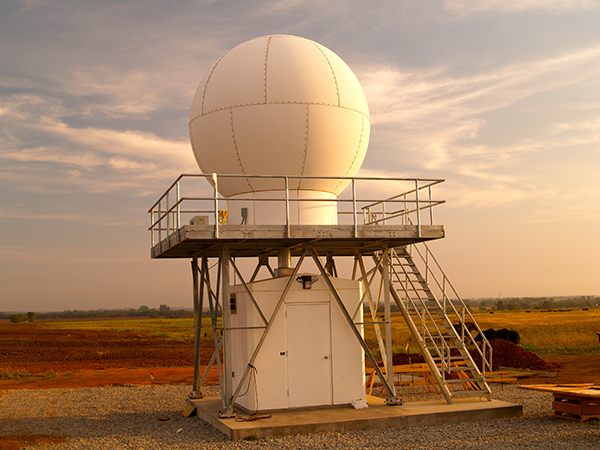More Than a Blip: ARM Radar Workshop Report Tracks the Future
Published: 6 April 2018
Radar Recommendations Now Available

The ARM Climate Research Facility operates the largest array of meteorological research radars in the world. These sensitive instruments are sophisticated and complex; some are custom-designed and built. They’re deployed in extremely challenging environments, including Antarctic ice sheets and offshore islands, sweltering tropical atolls, the Alaskan tundra, and super-humid Amazonian rainforest. It requires significant management, maintenance, and forward planning to get the most out of them.
To that end, ARM holds periodic radar workshops to develop a strategy. ARM’s Sixth Radar Engineering and Radar Science Workshop was held October 24 to 26, 2017, at Stony Brook University on Long Island, New York. Attendees included scientists funded by the U.S. Department of Energy’s Atmospheric System Research (ASR) program, ARM users, and members of ARM’s radar organization, which comprises two groups: Radar Science and Radar Engineering and Operations. Radar Science, funded by ASR, is led by Stony Brook’s Pavlos Kollias; Radar Engineering and Operations is led by Pacific Northwest National Laboratory’s Nitin Bharadwaj.
These teams work closely for planning, coordination, and communications to produce high-quality observations and products from ARM’s radar network. The overall goal of this workshop, like its predecessors, was to maximize scientific usage of ARM radar data to improve understanding of atmospheric processes and, ultimately, representation of clouds and precipitation in earth system models.
The workshop report, recently published on the ARM website, documents recommendations made by attending scientists. Topics include calibration, clutter mitigation, value-added products, forward simulators, scan strategies for the X-Band Scanning ARM Precipitation Radar at the Southern Great Plains atmospheric observatory, radar wind profiler scanning modes, and ancillary sensor data quality.
Read through the report to see what the future holds for ARM’s radars.
The ARM Climate Research Facility is a DOE Office of Science user facility. The ARM Facility is operated by nine DOE national laboratories.
Keep up with the Atmospheric Observer
Updates on ARM news, events, and opportunities delivered to your inbox
ARM User Profile
ARM welcomes users from all institutions and nations. A free ARM user account is needed to access ARM data.


















